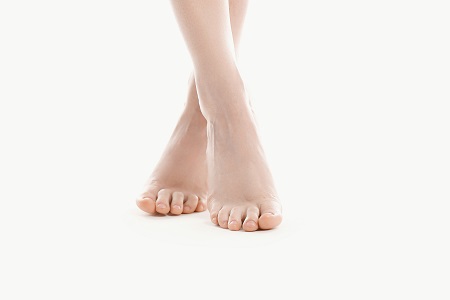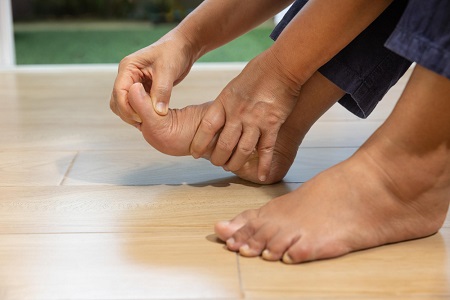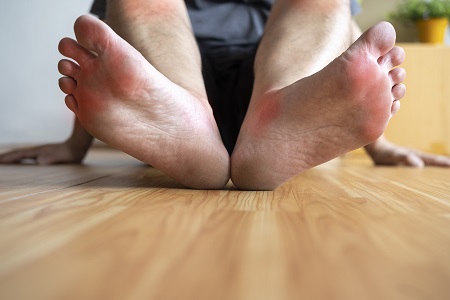Foot and Ankle Associates

Foot and Ankle Associates in a Nutshell
Foot and Ankle Associates based in Los Gatos, California are committed to helping people maintain active and independent lifestyles. By educating patients and addressing their needs, they are focused on treating and preventing a wide spectrum of foot ailments in people of all ages.
Podiatrists are uniquely trained to treat all foot and ankle disorders. Preparatory education for most Doctors of Podiatric Medicine (DPMs) consists of 4 years of pre-med undergraduate studies, followed by 4 years of coursework in an accredited podiatric medical school. After this, graduates attend a 2 or 3 year hospital-based residency. They then must sit for a state licensing exam. Podiatrists are well-versed in sports medicine, biomechanics, radiology, dermatology, and surgery relating to the foot and ankle.
Foot and Ankle Associates are an integral part of the healthcare team, working with other medical specialists and primary care physicians, with a common goal of keeping people healthy.
What our Customers Say About Us
Products / Services
Arthritis
Bunions
Tendonitis
Hammer Toes
PVD
Flat Feet
Corns
Children's Feet
Ankle & Sprains
Plantar Fasciitis
Warts
Fungal Problems
Nail Problems
Explore our New Video
If you are the owner of this page login to add your video now! (Youtube/Vimeo/Daily Motion)
Read our Recent Articles
When Do You Need to See Foot And Ankle Specialists?
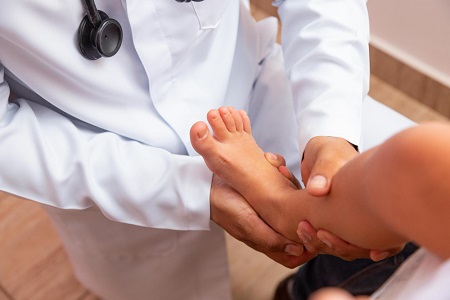 Foot and ankle specialists, also known as podiatrists, are experts in foot, ankle and lower limb health. Podiatrists treat people of all ages and can help prevent, diagnose and treat a wide range of foot conditions. Some podiatrists are specialized in different areas of foot medicine, for instance, they may be specialists in surgery, wound care, sports medicine or diabetic foot care.
Foot and ankle specialists, also known as podiatrists, are experts in foot, ankle and lower limb health. Podiatrists treat people of all ages and can help prevent, diagnose and treat a wide range of foot conditions. Some podiatrists are specialized in different areas of foot medicine, for instance, they may be specialists in surgery, wound care, sports medicine or diabetic foot care.
Footwear for Ingrown Toenails - The Dos and Don’ts
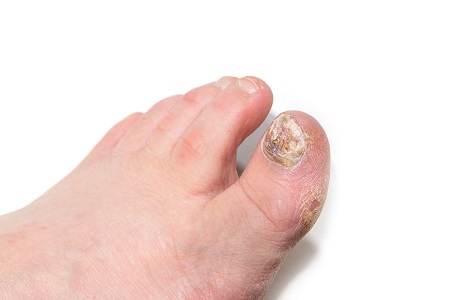 Proper footwear is important when dealing with ingrown toenails as it helps in promoting healing, preventing further irritation and reducing discomfort.
Proper footwear is important when dealing with ingrown toenails as it helps in promoting healing, preventing further irritation and reducing discomfort.
Keep Your Feet Smooth with the Right Foot Corn and Callus Treatment
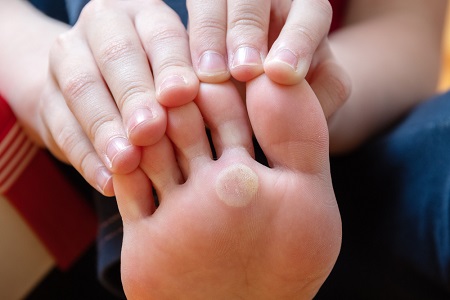 Foot corns and calluses are thickened areas of skin. They develop due to pressure or friction on the feet. Foot corns and calluses are not serious conditions normally, but they can be quite uncomfortable, and may even cause pain or difficulty when walking.
Foot corns and calluses are thickened areas of skin. They develop due to pressure or friction on the feet. Foot corns and calluses are not serious conditions normally, but they can be quite uncomfortable, and may even cause pain or difficulty when walking.
When Is Full Toenail Removal Recommended for Foot Health?
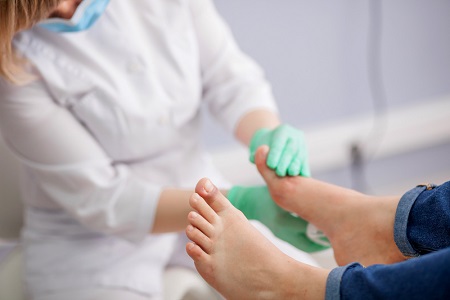 Full toenail removal, or toenail avulsion, is a surgical procedure in which the entire toenail is removed from the nail bed
Full toenail removal, or toenail avulsion, is a surgical procedure in which the entire toenail is removed from the nail bed
Managing Ingrown Toenails
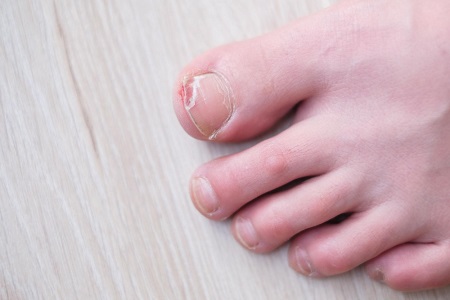 Ingrown toenails occur when the edge of a toenail grows into the skin surrounding it, causing pain, discomfort, and infection. This can happen on any toe, but it is most common on the big toe.
Ingrown toenails occur when the edge of a toenail grows into the skin surrounding it, causing pain, discomfort, and infection. This can happen on any toe, but it is most common on the big toe.
Corn Removal Treatment – When Do You Need It?
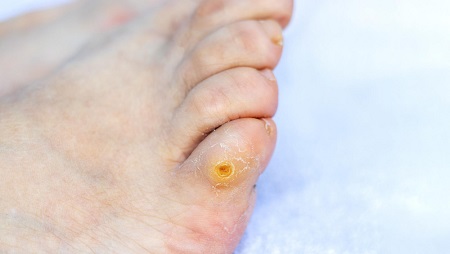 Foot corns are a type of thickened skin that develop in response to pressure or friction on the feet. They typically appear as small, raised bumps or as patches of hard, thickened skin on the toes or heels, or balls of the feet. There are many methods for getting rid of corn on the bottom of the feet.
Foot corns are a type of thickened skin that develop in response to pressure or friction on the feet. They typically appear as small, raised bumps or as patches of hard, thickened skin on the toes or heels, or balls of the feet. There are many methods for getting rid of corn on the bottom of the feet.
When Is Reconstructive Foot Surgery Recommended?
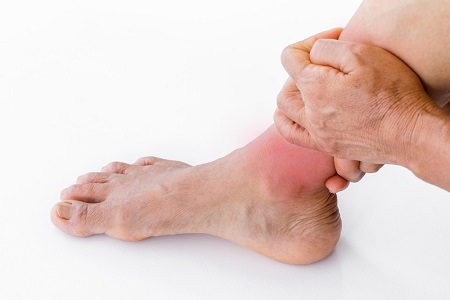 Your feet carry your weight day in and day out and work tirelessly; it is natural to develop conditions that affect the foot. Quite often, foot problems can be managed with simple home remedies and over-the-counter medication. However, in some cases, foot problems do not respond to conservative treatment and you should consult a foot and ankle doctor. Your podiatrist will be able to determine what the next course of action should be and whether surgery is required.
Your feet carry your weight day in and day out and work tirelessly; it is natural to develop conditions that affect the foot. Quite often, foot problems can be managed with simple home remedies and over-the-counter medication. However, in some cases, foot problems do not respond to conservative treatment and you should consult a foot and ankle doctor. Your podiatrist will be able to determine what the next course of action should be and whether surgery is required.
Hammertoe Deformity - Causes, Symptoms, and Treatment
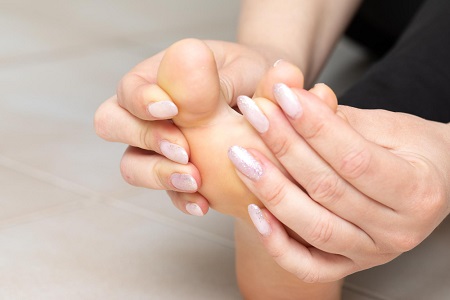 A hammertoe is a condition in which the toe is bent at the middle joint and resembles a hammer. It is more than just a cosmetic issue as the condition causes the toe to become rigid and stiff, in a curled position. This can cause muscle imbalance and unnatural stress on the other areas of the toes and feet.
A hammertoe is a condition in which the toe is bent at the middle joint and resembles a hammer. It is more than just a cosmetic issue as the condition causes the toe to become rigid and stiff, in a curled position. This can cause muscle imbalance and unnatural stress on the other areas of the toes and feet.
Frequently Asked Questions about our Products / Services
What type of fungal infections cause ingrown nail?
Fungal infections don’t cause ingrown toe nail. Ingrown toe nails occur due to wearing too tight shoes, cutting toe nails too short or injuring toe nails. It could be due to unusually curved toenails too. The toe nail fungal infections occur when this ingrown toe nails are not attended to and get infected by various fungi. If you are looking for a podiatrist for fungal nail infection treatment in Los Gatos, search online and you will be able to find one.
What is the difference between a podiatrist and a foot and ankle specialist?
Both podiatrist and foot and ankle specialist are different names for the same type of specialists. They look after problems related to the foot and ankle and provide solutions for all kinds of foot ailments. They treat ingrown toenails, calluses, fallen arches, heel spurs and problems related to abuse or injury. They may also employ surgical methods and treat underlying health issues like diabetes, provided they are related to the foot or ankle problem.
What is amniotic stem cell therapy?
Amniotic stem cell therapy is a very safe and effective treatment for tissue regeneration and healing. Amniotic stem cells are obtained from the amniotic fluid as well as the amniotic membrane. Amniotic stem cell therapy is very popular in sport injuries, and pain, related to aging and chronic diseases.
What are the common foot problems around you?
Some common foot problems that arise, especially as we come out of the cold season, are cracked heels, split skin, toenail fungus, etc. This is because of the dryness the cold season gives to our feet. By applying moisturizers regularly and having regular foot soaks, cracked heels and splitting skin can be avoided. Keeping your feet dry can also help prevent feet fungus.
What is the main cause of plantar fasciitis?
Have you experienced pain when you repeatedly walk on a hard surface? Are you an athlete who puts pressure on your foot while running a race? Is the pain stabbing? Are you standing for extended periods? It is advisable to get proper plantar fasciitis treatment as soon as possible after appropriate diagnosis from a specialist doctor.
What is the best treatment for fractures?
A fracture is a break or a crack in a bone. It occurs when force exerted against a bone is stronger than the bone can structurally with stand. Fractures Treatment includes immobilizing the bone with a plaster cast, or surgically inserting metal rods or plates to hold the bone pieces together. Some complicated fractures may need surgery and surgical traction. In most cases, your cast will be removed after a few weeks, but you must treat your limb with care for at least the next month or so.
How do I heal a burn quickly?
In case of a mild burn emergency, First Aid Treatment would be to hold burned skin under cool running water until the pain subsides. Apply a petroleum-based ointment two to three times per day and give over-the-counter pain reliever. Seek medical help if the burn is very severe and there is infection, like increased pain, redness, swelling, fever, or oozing.
Can one stress fracture treatment lead to another stress fracture?
It is important to see a doctor if you have had a stress fracture. If a stress fracture is not treated, the fracture may get worse. It can heal improperly, lead to arthritis or may even need surgery. Ignoring the pain can lead to serious problems in the future, so it is important to get Stress Fracture Treatment. While you recover from a foot or ankle stress fracture, avoid running or even walking on hard surfaces. You can easily reopen your fracture and have to begin the recovery process again. You may have to wear a protective boot to prevent trauma to the feet and to aid fracture healing.
At Foot and Ankle Associates, our podiatrist will see what are the best treatment options for your stress fracture.
Can plantar fasciitis go away on its own?
There are many treatments for damaged toenails, including over-the-counter medications, prescription medications, and home remedies. In some cases, plantar fasciitis may go away on its own. However, if the condition is severe or persists for an extended period of time, it is advisable to seek medical treatment.
Who has more foot problems women or men?
Women are more prone to foot problems than men due to their often narrower and higher-arched feet. This makes women more susceptible to conditions such as hammertoe, bunions, and Morton's neuroma.
Additionally, women are also more likely to experience pain in the ball of the foot due to their use of high heels. While high heels can be stylish and attractive, they can also do a lot of damage to your feet over time. So if you're a woman who loves wearing high heels, make sure you take some time every day to give your feet a break and stretch them out.
Can you walk after ganglion cyst removal?
The short answer is that it usually takes about 3 to 4 weeks after the ganglion removal for the patient to be able to wear shoes and start walking normally. However, this will vary from patent to patient as factors like the exact location of the cyst, the size, the age and overall health of the patient, etc. all affect the recovery process. At Foot and Ankle Associates we first do a detailed examination of the cyst and the patient’s overall health before informing them of the expected recovery period and time before they can start walking. This allows them to plan for their period of limited mobility.
What is the difference between arthritis and gouty arthritis?
Most types of arthritis are caused by inflammation in the joints. Joint inflammation can be caused by several different conditions, including gout. Gouty arthritis is a specific type of arthritis that is caused by deposits of uric acid crystals in the joints.
There are a few key differences between arthritis and gouty arthritis. Gouty arthritis is usually much more painful than other types of arthritis. The pain is often described as “ throbbing” or “burning” and can be severe enough to interfere with daily activities. Also, gouty arthritis typically affects only one joint at a time, while other forms of arthritis can affect multiple joints simultaneously.
Do podiatrists treat toenail fungus?
Yes, podiatrists are able to treat toenail fungus. They may prescribe a topical medication or oral medication to help clear up the infection. If the infection is severe, podiatrists may also remove the toenail.
Do I need to see a doctor for tendonitis?
Tendonitis is a condition that results when the tendons, which attach muscles to bones, become inflamed. The most common symptom is pain, which may be accompanied by swelling, stiffness, and weakness.
You should see a doctor if you are experiencing any of these symptoms. tendonitis can often be treated with rest, ice, and medication; however, in some cases, surgery may be necessary.
Who diagnose and treat disorders of the feet?
Disorders of the feet can be diagnosed and treated by a variety of professionals, depending on the condition. For example, a podiatrist is specially trained to treat conditions that affect the foot and ankle, such as bunions, corns, and calluses. If you are experiencing a rare foot condition, it is important to seek out a specialist who can provide you with the best possible treatment.
What is one of the most common disorders of the foot?
Plantar Fasciitis is a condition that results in pain and inflammation along the bottom of the foot. The plantar fascia is a band of tissue that connects the heel bone to the toes. This band of tissue can become inflamed or irritated when it is put under too much stress. This can happen when someone stands or walks for long periods of time, when they are overweight, or when they have tight calf muscles.
There are a number of treatments that can help relieve the symptoms of plantar fasciitis. These include icing the foot, taking over-the-counter medications such as ibuprofen, stretching exercises, and wearing shoes with good arch support. If these treatments don't work, it's better to contact Specialists who are experts in treating rare foot conditions in Los Altos or wherever you may live.
Should i see a podiatrist or orthopedist for foot pain?
The best answer to this question would be to speak with your doctor and get a referral. However, generally speaking, if you are experiencing pain in your feet, you should see a podiatrist. Podiatrists are experts when it comes to diagnosing and treating foot problems.
What is the cause of hammertoe deformity?
Hammertoe deformity is a condition that occurs when the tendons and muscles in the toe become unbalanced. This can cause the toe to bend at one or more joints, resulting in a hammer-like shape. The most common cause of hammertoe deformity is wearing shoes that do not fit properly, such as shoes that are too tight or have high heels. Other causes include injury, certain medical conditions such as arthritis, nerve damage, and genetics. In some cases, the condition may be caused by a combination of factors. It is important to consult with a qualified medical professional to determine the underlying cause of hammertoe deformity and develop an appropriate treatment plan.
What is mallet toe deformity?
Mallet toe deformity is a condition in which the end of the toe bends downward and does not straighten. It typically affects the second, third, or fourth toes, and can be caused by a variety of factors, including improper footwear, a traumatic injury, or a pre-existing foot condition such as arthritis or a bunion. Mallet toe deformity can cause discomfort, pain, and difficulty wearing shoes, and in severe cases, may require surgery to correct. Treatment options for mallet toe deformity include padding and taping, wearing more comfortable shoes, and, in some cases, surgical intervention to realign the toe and relieve pain. A podiatrist can determine the best course of treatment based on an individual's specific condition.
What is Mallet Toe?
Mallet toe is a foot deformity in which the end of the toe is bent downward, resembling a mallet. This condition occurs when the joint at the end of the toe becomes locked in a bent position. Mallet toe is typically caused by a muscle and ligament imbalance that results from wearing poorly fitting shoes or shoes with a narrow toe box. The condition can also result from an injury to the toe, arthritis, or nerve damage. Symptoms of mallet toe may include pain and discomfort in the affected toe, difficulty walking, and the formation of calluses or corns on the affected toe. Treatment for mallet toe may include wearing shoes with a wide toe box, using orthotics to support the foot, and, in severe cases, surgery to realign the affected joint.
What is corn removal treatment and how is it performed?
Corn removal treatment is a procedure that involves removing the thickened skin that forms on the feet due to constant pressure or friction. It is typically performed by a podiatrist and involves carefully cutting away the corn with a scalpel or using a special acid solution to dissolve it. In some cases, the underlying cause of the corn, such as a hammertoe deformity, may also need to be addressed to prevent the corn from returning. Patients may experience some discomfort during the procedure, but it is usually quick and relatively painless. Proper foot hygiene and footwear can also help prevent the development of corns.
Are there any alternative treatments or home remedies for corn removal?
While seeking professional corn removal treatment is generally recommended for effective and safe results, there are some alternative treatments and home remedies that may provide temporary relief. Over-the-counter corn pads or cushions can help alleviate pressure and discomfort. Applying moisturizers or petroleum jelly to the affected area can soften the corn and reduce friction. Regularly soaking the foot in warm water and gently using a pumice stone or emery board to exfoliate the corn may also provide temporary relief. However, it is important to note that these methods may not fully eliminate the corn and can potentially cause further irritation or infection if not done correctly. For a more comprehensive and long-term solution, it is advisable to consult with a healthcare professional or podiatrist for appropriate corn removal treatment.
What are the causes of ingrown toenails?
Ingrown toenails can be caused by various factors, including:
1. Improper Nail Trimming: Cutting the toenails too short or rounding the edges can encourage the nails to grow into the surrounding skin.
2. Tight or Ill-Fitting Footwear: Wearing shoes that squeeze or put pressure on the toes can cause the nails to grow improperly and become ingrown.
3. Trauma or Injury: Stubbing the toe or experiencing trauma to the nail can lead to ingrown toenails.
4. Natural Nail Shape: Some individuals naturally have curved or involuted nails that are more prone to becoming ingrown.
5. Poor Nail Care: Neglecting proper foot hygiene, such as not keeping the feet clean and dry, can contribute to ingrown toenails.
6. Genetic Predisposition: Certain individuals may have a genetic predisposition to develop ingrown toenails.
7. Abnormal Foot Structure: Foot deformities or structural issues, such as bunions or hammertoes, can increase the likelihood of ingrown toenails.
It's important to address ingrown toenails promptly to prevent complications such as infection. Treatment options range from conservative measures like soaking the feet in warm water and wearing open-toed shoes to more advanced interventions such as nail avulsion or surgical correction. If you have persistent or severe ingrown toenails, it is recommended to consult a healthcare professional or podiatrist for proper evaluation and treatment.
When should I consider visiting a foot doctor for foot pain or discomfort?
You should consider visiting a foot doctor (podiatrist) for foot pain or discomfort in the following situations:
1. Persistent Pain: If foot pain or discomfort persists for more than a few days and doesn't improve with rest or home remedies.
2. Limited Mobility: If foot pain is causing difficulty in walking, standing, or performing everyday activities.
3. Swelling or Redness: If your foot is swollen, red, or warm to the touch, it could indicate an infection or inflammation.
4. Injury: If you have a foot injury, such as a sprain, strain, or fracture.
5. Wounds or Sores: If you have wounds, sores, or ulcers on your feet, especially if you have diabetes or poor circulation.
6. Changes in Foot Appearance: If you notice any changes in the shape, size, or color of your foot.
7. Numbness or Tingling: If you experience numbness, tingling, or loss of sensation in your feet.
8. Ingrown Toenails: If you have recurring ingrown toenails or difficulty managing them at home.
9. Corns or Calluses: If you have painful corns or calluses that don't improve with over-the-counter treatments.
10. Chronic Conditions: If you have a chronic foot condition, such as plantar fasciitis or Achilles tendonitis, that requires ongoing care and management.
Visiting a foot doctor can help diagnose the underlying cause of your foot pain or discomfort and provide appropriate treatment and advice to promote foot health and prevent further issues. Early intervention can often lead to better outcomes and faster recovery.
How do foot and ankle treatments differ for athletes or individuals with active lifestyles?
Foot and ankle treatments for athletes or active individuals require specialized approaches due to the demands of their pursuits. These treatments focus on swift recovery and optimal performance. Therapies often emphasize faster healing, tailored rehabilitation exercises, and ergonomic footwear to prevent recurring injuries. Incorporating biomechanical analysis, sports-specific training, and minimally invasive interventions, foot and ankle treatments cater to unique athletic needs. It's imperative to address issues promptly to ensure athletes regain functionality swiftly. By considering the physical demands of activity, these treatments not only heal injuries but also aid in maintaining peak performance levels for sports enthusiasts.
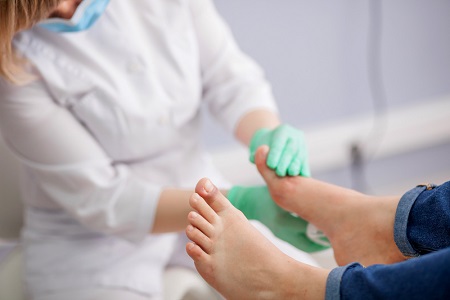 Minimally invasive foot and ankle procedures, as the name implies, use the smallest possible incisions to perform surgery and treat the condition. Through these incisions, instruments are inserted and the condition is rectified.
Minimally invasive foot and ankle procedures, as the name implies, use the smallest possible incisions to perform surgery and treat the condition. Through these incisions, instruments are inserted and the condition is rectified.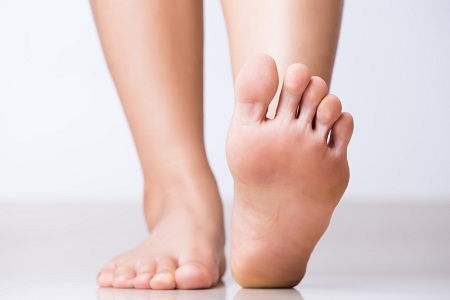 People with diabetes are more prone to foot problems due to reduced sensation, poor circulation and impaired wound healing. Proper and regular diabetic foot care and preventive measures play a crucial role in the care and management of diabetic foot conditions.
People with diabetes are more prone to foot problems due to reduced sensation, poor circulation and impaired wound healing. Proper and regular diabetic foot care and preventive measures play a crucial role in the care and management of diabetic foot conditions. For an athlete, his feet play a huge role in his performance. But, with any kind of sports and fitness, the feet are subjected to hardships. Painful injuries and strains can occur, which could have been avoided with the right support.
For an athlete, his feet play a huge role in his performance. But, with any kind of sports and fitness, the feet are subjected to hardships. Painful injuries and strains can occur, which could have been avoided with the right support.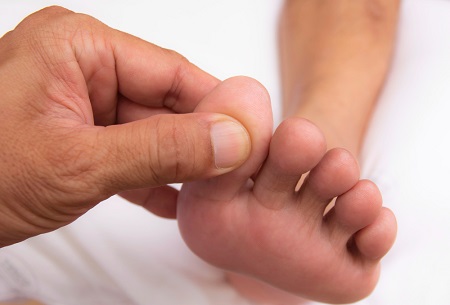 Foot corns and calluses can affect people of all ages, but they can be particularly problematic for the elderly due to age-related factors such as decreased skin elasticity, reduced blood circulation and a higher likelihood of foot deformities or conditions like arthritis.
Foot corns and calluses can affect people of all ages, but they can be particularly problematic for the elderly due to age-related factors such as decreased skin elasticity, reduced blood circulation and a higher likelihood of foot deformities or conditions like arthritis.